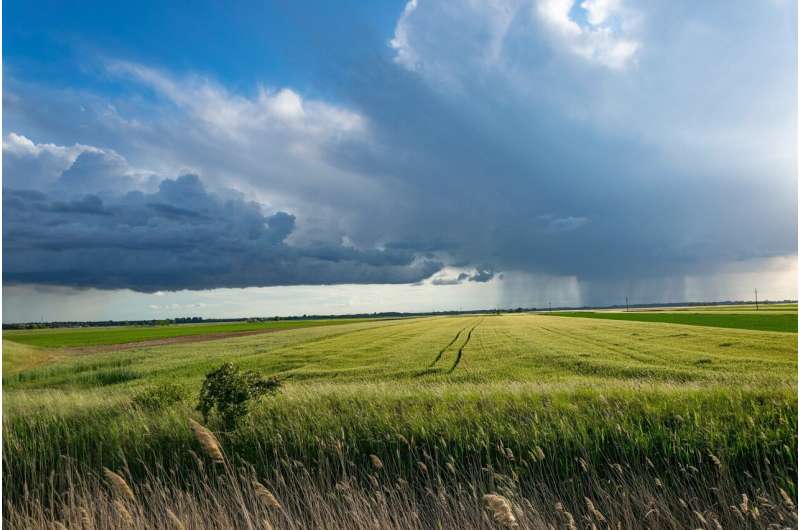This article has been reviewed according to Science X's editorial process and policies. Editors have highlighted the following attributes while ensuring the content's credibility:
fact-checked
peer-reviewed publication
trusted source
proofread
Revealing the influences on La Niña and El Niño weather conditions

Weather, such as unexpected storms, can influence the climate outcomes of La Niña and El Niño events, determining how much rainfall there is, according to new research by CSIRO, Australia's national science agency.
The study explored why Australia was very wet and cool in November 2021 but very dry and warm in November 2020, despite the fact they both occurred during a La Niña.
This information will increase understanding of the influence of unpredictable conditions for future forecasting.
Dr. Carly Tozer, CSIRO lead author of the study published in Monthly Weather Review, said Australia's climate drivers like La Niña and El Niño, the Indian Ocean Dipole (IOD) and Southern Annular Mode (SAM) can indicate climate outcomes. However, other factors, such as storms and air currents, can also influence conditions.
"Generally, we expect wetter conditions during La Niña and drier conditions during El Niño. However, our research shows that the outcomes can sometimes be different to what we expect," Dr. Tozer said.
"Weather can hinder our predictions of the La Niña and El Niño conditions we might experience and influence if a season is wet or dry."
The study found specific air currents, known as jet streams, influenced the climate outcomes experienced in the 2021 and 2020 events.
"We found the presence or absence of these air currents over Australia contributed to the very wet November 2021 and very dry November 2020, respectively," Dr. Tozer explained.
"Jet streams in the upper atmosphere can steer weather systems, including low pressure systems, and influence rainfall in the regions they pass over.
"In November 2021 there was a strong jet stream signature over Australia, coupled with cooler temperatures. This contributed to wet conditions in November 2021. In November 2020, the jet stream was largely absent over Australia, and there were warmer temperatures. This meant that rainfall systems were steered south of Australia, contributing to the dry month."
Long lead time predictions of the impacts of La Niña and El Niño on Australia's climate can be challenged by these less predictable weather fluctuations.
"La Niña and other climate drivers, like the Indian Ocean Dipole and Southern Annular Mode, play an important role in shaping our rainfall. But it's not the whole story," Dr. Tozer said.
"For example, the most recent 2023 El Niño event didn't eventuate in expected dry conditions for Australia.
"Our findings show that we can experience different outcomes due to fluctuations in the jet streams and associated storms over the continent.
"It's important for us to better understand all the weather and climate processes at play so we can manage our expectations around likely climate outcomes for Australia when a La Niña event, for example, is forecast in the future."
More information: Carly R. Tozer et al, A Tale of Two Novembers: Confounding influences on La Niña's relationship with rainfall in Australia, Monthly Weather Review (2024). DOI: 10.1175/MWR-D-23-0112.1
Journal information: Monthly Weather Review
Provided by CSIRO



















